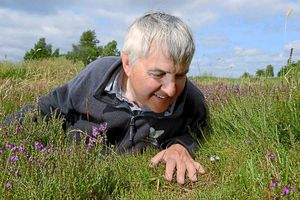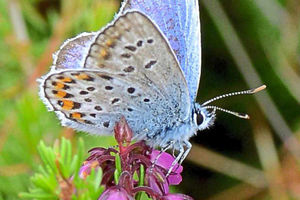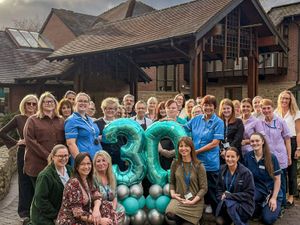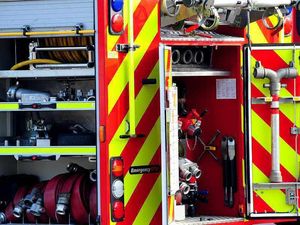Rare butterfly thrives on county heathland
Meet the Silver-studded Blue butterfly – one of the nation's most endangered butterfly species.

The creature is almost entirely confined to heathland areas and has become a symbol for the fast diminishing habitat.
Prees Heath Common, near Whitchurch, is the last remaining place in the Midlands where this particular species of butterfly survives.

And if you want to get up close and personal with one of the beautiful creatures, it means being prepared to get your knees dirty.
Hundreds of people, it seems, are happy to do just that, and it's turning Prees Heath Common into something of a Mecca for experts and enthusiasts alike.
Every year people from across the country come to take pictures of the Silver-studded Blue whose adult flight period only tends to happen between July and August each year.
In 2006 Butterfly Conservation purchased the site to help protect the rare species. News has spread and the common land is now well known nationally as a centre where the Silver-studded Blue can still thrive and survive. Stephen Lewis, Prees Heath warden, said: "The butterfly is rare and it is also found in southern England and on the Great Orme in Llandudno.
"Heathland is the key thing for them to thrive and unfortunately a lot has been destroyed. This is why Prees Heath is a really special place.
"Restoring heathland is very good news for the butterfly.
"Each year we do a count of the butterflies here and we believe there are several hundred. Numbers go up and down."
An open day was held last weekend at the reserve, where visitors were invited to see the recently restored former RAF control tower that acts as a base for the nature lovers.
Last year, with funding from the Heritage Lottery Funded Meres & Mosses Landscape Partnership Scheme and Natural England, Butterfly Conservation restored the tower to its former glory whilst turning it into a home for the area's wildlife.
The outside walls were painted in camouflage colours and fitted with numerous bird boxes. And after years of neglect, the inside of the building was also given a makeover.
Part of the day also included a guided walk where people were shown the best areas to see the Silver-studded Blue butterflies and hear about their remarkable life cycle.
Mr Lewis added: "Prees Heath Common is the last remaining place in the Midlands where this particular species of butterfly survives, mainly because of the destruction of its heathland habitat.
"The Silver-studded Blues are very photogenic. We had about 50 people at the open day. The tower has all been restored now."
The Silver-studded Blue gets its name from the light blue reflective scales found on the underside of most adults and which are visible when light reflects off them.
As with many other species of Blue, the males are blue while the female is a less-conspicuous brown.
The Silver-studded Blue is found in close-knit colonies, which makes it good for butterfly-spotters.
They rarely fly any distance. Most colonies contain fewer than a thousand adults. However, a few colonies are huge, with the number of adults measured in tens of thousands, providing an amazing spectacle.





